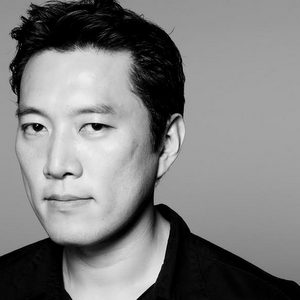 Notebook on Cities and Culture‘s Korea Tour is brought to you by Daniel Murphy, David Hayes, and The Polar Intertia Journal, an outlet for artists and researchers documenting the urban condition.
Notebook on Cities and Culture‘s Korea Tour is brought to you by Daniel Murphy, David Hayes, and The Polar Intertia Journal, an outlet for artists and researchers documenting the urban condition.
In Seoul’s Itaewon district, Colin talks with architect Minsuk Cho, principal at Mass Studies, designer of the Golden Lion-winning Korean pavilion at the Venice Architecture Biennale 2014. They discuss whether he talks about the use of space differently in English than in Korean; how copying, and especially while misinterpreting across cultural boundaries, counts as a way of creating; his earliest memories of Seoul’s “building explosion” that grew the city tenfold over fifty years; the difference between current Seoul and the Seoul of his childhood; the “concrete utopia” in which he grew up, and how quickly it went away when the branded “high-density gated community” high-rises that now characterize the city rose; the book that set him on the path to architecture (even as his architect father didn’t push him into the profession); the “toilet paper” life expectancy of Korean buildings; how he has reacted to the “bigger, higher, cheaper, faster” building ethos of Seoul; the “blessing” of so much building right up against so much nature; when Korea’s dictatorship didn’t want people to gather, and what effect that had on the built environment; his experience riding a Yellow Cab from LAX to Palm Springs; how Seoul passed through its “juvenile teenager phase,” and what mistakes it made that compare to Los Angeles’ onetime avoidance of density; the village fetish that has recently developed; what he felt in New York that made him cartwheel in the streets; why the flatness of Rotterdam bothered him when he worked for Rem Koolhaas; how Korea became, for him, a more appealing place to build things; Mass Studies’ Pixel House in the recently developed city of Paju and the island of Jeju; the beginning of a reverse migration out of Seoul; Itaewon’s varying role in the city as “a center that is also a void”; the importance of architecturally uniting North and South Korea in Mass Studies’ Venice Biennale pavilion; and what he thinks of the prospects of actually reuniting, for architecture or otherwise.
Download the interview here as an MP3 or on iTunes.
(Photo: Sukmu Yun)